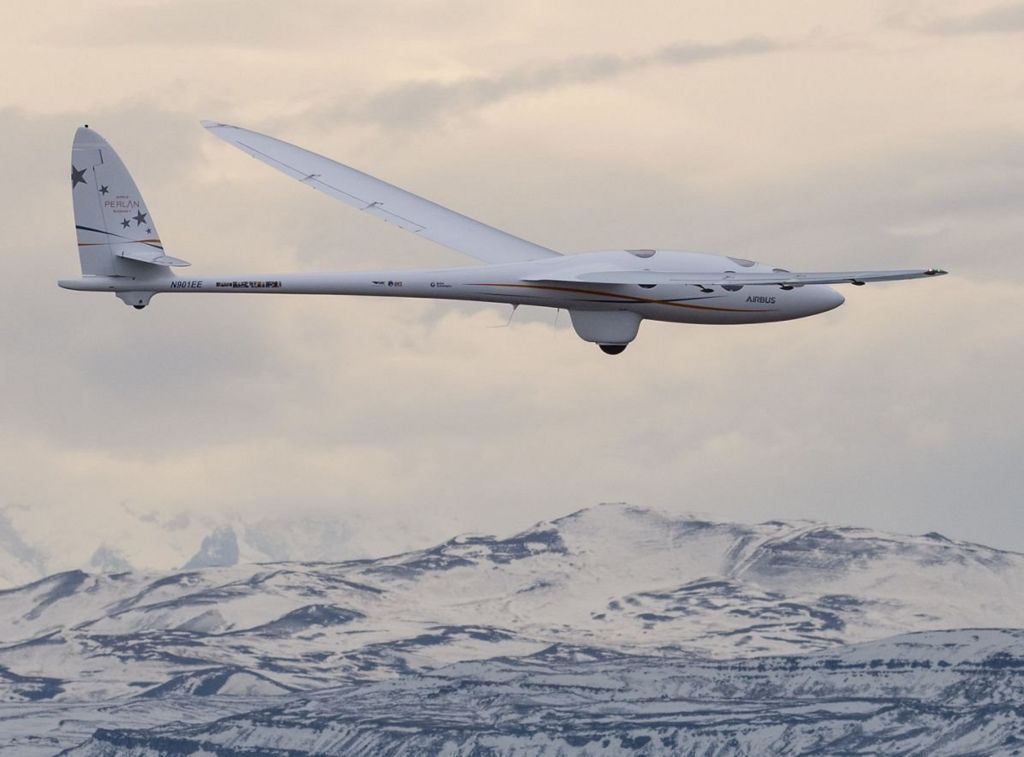Two-pilot glider team sets altitude record
- Published

An engineless glider has been flown at a record altitude of 52,172ft (15.9km).
The aircraft's two pilots achieved the feat in the skies above Argentina's Patagonia region.
The height represented a 3% gain over a record set in 2006 by other members of the same Perlan Project team.
The adventurers took advantage of polar winds to help lift their carbon fibre-based vehicle high into the stratosphere. However, their ultimate goal is to surpass 90,000ft.
"We will continue... our scientific experiments to explore the mysteries of the stratosphere," said the project's chief executive, Ed Warnock, after the glider had safely landed on Sunday.
"We've made history, but the learning has just begun."
The flight was not only the Perlan 2's highest, but also its longest and coldest.
The glider stayed airborne for about six hours and 35 minutes - holding its altitude at times to steer clear of commercial planes - and faced temperatures as low as -68C (-90F).
This helped cause the sole glitch of the day - a deflated tyre, which did not cause a problem and was discovered only on touchdown.
The project's main sponsor is the European aerospace company Airbus.
Big wings
The Perlan 2 glider involved is described as a "pressurised sailplane", which can handle air density - the mass of air divided by its volume - of less than 2% its sea level reading.
The pressurised aircraft weighs 1,800lb (816kg) - about the same as the original VW Beetle car - and has specially designed wings spanning 84ft that cope better with higher altitudes than lower ones.
In theory, the wings can handle the kind of wind speeds found at 91,000ft, but no higher.
In addition to the two pilots - Jim Payne and Morgan Sandercock - the glider also carried a life-support system, parachutes and scientific equipment.
"Some of the things they can do measuring ozone depletion is unique," said Stephen Trimble, a journalist from Flightglobal, who recently spent time with the project in Argentina.
"Because they don't have engines, their measurements are not tainted by their own emissions.
"But if you talk to those guys, what you have is a group of aeronautical adventurers who are trying to do something no-one else has done before, which is extremely difficult and quite a bit dangerous."
Polar vortex
The record-setting flight took place near to El Calafate - a town by a large lake and the Andes mountains, near the base of Argentina - and took advantage of two meteorological phenomena that rarely coincide.
The first was wind currents coming over the Andes that create a type of wave-like effect. By riding the waves to their peaks, the pilots were able to get to about 30,000-40,000ft.
The second factor was the south pole's polar vortex.
This is a low pressure zone that rotates clockwise around Antarctica.
During South America's winter months - which are at the opposite time of the year to the northern hemisphere's - the vortex throws off a polar-night jet stream, which spills northwards under some conditions.
This can take an aircraft up to heights of 120,000ft, assuming that its wings and fuselage can cope.
"They would like to take it as high as they can," Mr Trimble told the BBC.
"Groups like Perlan and some of the other Silicon Valley-funded projects are really trying to bring back the spirit of aeronautical adventurism that aviation was known for, in a way we haven't seen for a long time."
- Published30 June 2017
- Published17 May 2017